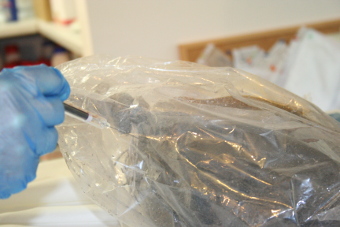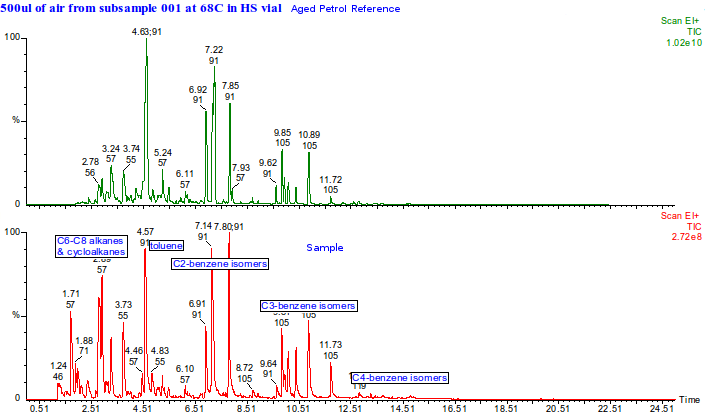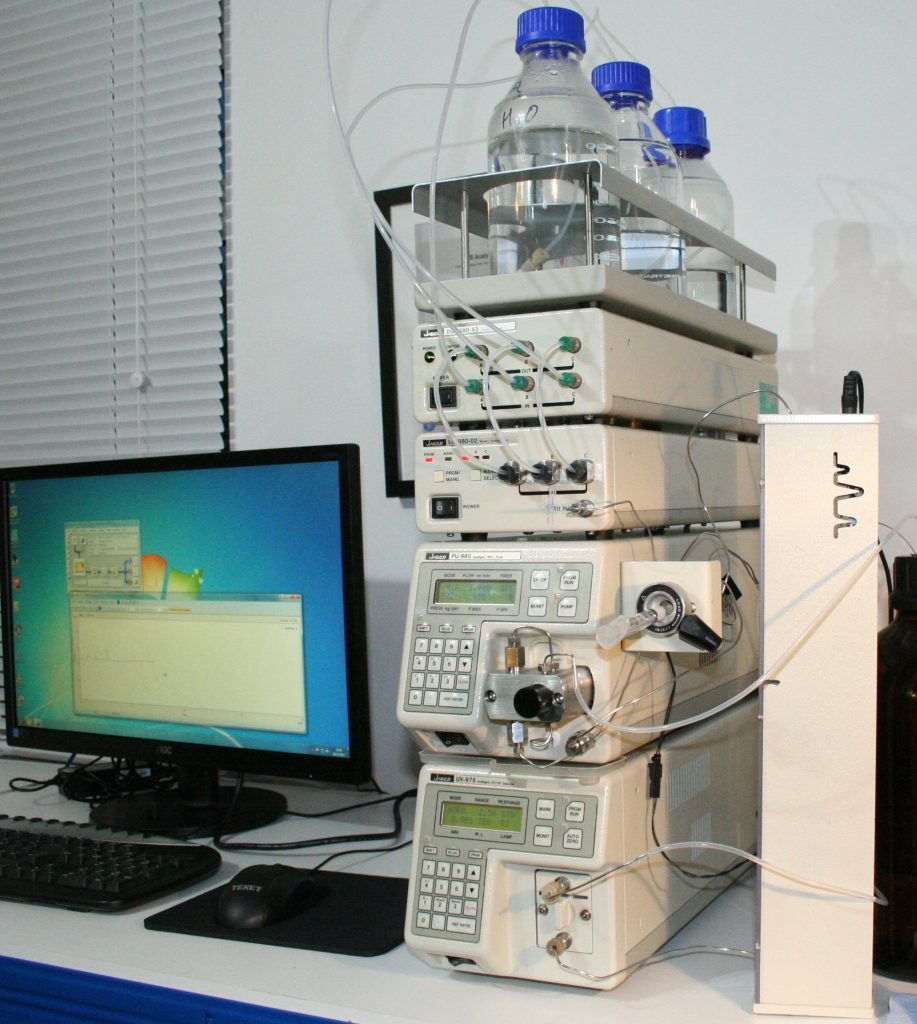Accelerants may be used to start fires and SMS Analytical get a lot cases from insurance investigators relating to suspected arson using accelerants such as petrol.
Debris from the scene is placed in nylon bags and tied using the recommended swan neck technique [1] before placing in an additional outer nylon bag.
SMS Analytical receive this sealed package and can determine if traces of accelerants are present. To maximise the detection of just volatile hydrocarbons we take a sample of the vapour from the inner bag using a special head-space syringe inserted through the bag wall and then immediately seal-up the puncture :

The contents of the syringe are injected directly into a GCMS for detection of relevant molecular ions.
The figure below shows a vapour sample from fire debris (bottom) compared with a sample of vapour from an aged petrol (top). The identity of the compounds was confirmed using both mass spectral library [2] matches and reference compounds injected separately. Toluene, xylenes (C2-benzenes) and C3 and C4-benzenes are prominent in the fire debris vapour. The alkanes are, as expected, mainly branched chain or cyclic. The presence of petrol, a known accelerant, at the site of the fire was established.

Find out more about our consultancy and laboratory services and an obligation free quote.
Article References:
(1) Fire Debris Analysis By Eric Stauffer, Julia A. Dolan, Reta Newman
(2) NIST Mass Spectral Library from Perkin Elmer



